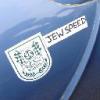I have some problems with the weber, it`s all adjusted for the engine , but the cylinder 1 and 4 doesn`t work at idle and progression throttle, i spend too many hours trying to solve that problem, in the car and looking for some solution on the net, but is almost impossible to fix, the carb works perfect at medium and full speed , really fast car .
I change the idle jet, first it had 55F8 jet and now the 55 f6, but the problem on low range stays !!
No air leaks
The head is a STD one 12g940
All the valves are opening and closing properly
New and dry spark plugs
Yesterday i change the DCOE for a SU HS4 and the engine works great !
I have 2 inlet intakes, a swan-necked and steel 5" , with both it`s the same, but with the 5" of length it works better but of all ways they fail the cylinders of the ends.
What can i do ? anyone had the same problem with a weber ?
Edited by Dom_Joly, 05 October 2007 - 09:31 AM.















